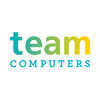Information Technology Support Engineer
20+ Information Technology Support Engineer Interview Questions and Answers for Freshers

Asked in Arwade Infrastructure

Q. Diffrence between router and switch? Differnce between TCP AND UDP? what is port no. Of SMTP AND POP3? What is Printer? How to add new printer? What is BSOD? HOW to fix it? How to take backup of data in outlook...
read moreRouter forwards data packets between computer networks, while switch connects devices within a network. TCP is connection-oriented, UDP is connectionless. SMTP uses port 25, POP3 uses port 110. Printer is a device that produces text or graphics on paper.
Router forwards data between networks, switch connects devices within a network
TCP is connection-oriented, UDP is connectionless
SMTP uses port 25, POP3 uses port 110
Printer produces text or graphics on paper
BSOD stands for Blu...read more

Asked in DataTrained

Q. What will you do if a system frequently hangs?
If a system hangs a lot, I will troubleshoot the issue by checking for hardware or software problems, performing system updates, and optimizing system resources.
Check for hardware issues such as overheating or faulty components
Scan for malware or viruses that may be causing the system to hang
Update the operating system and software to the latest versions
Optimize system resources by closing unnecessary programs or services
Monitor system performance using tools like Task Manage...read more

Asked in TCS

Q. What type of frequency is used during voice call transmission?
Voice calls use frequencies in the range of 300 Hz to 3400 Hz.
Voice calls use analog signals that are transmitted over the airwaves or through cables.
The human voice typically falls within the frequency range of 300 Hz to 3400 Hz.
The quality of a voice call can be affected by factors such as network congestion and signal interference.

Asked in Aforeserve

Q. What will you do if the internet connection is suddenly lost?
I will check the network connection and troubleshoot the issue.
Check if other devices are also affected
Restart the router/modem
Check for any loose cables
Ping the default gateway
Contact the ISP if necessary

Asked in DataTrained

Q. What will you do when a system won’t start?
When a system won't start, I will perform troubleshooting steps to identify and resolve the issue.
Check power supply and connections
Verify hardware components are properly seated
Check for error messages or beeps
Attempt a power cycle
Check BIOS settings
Test with a different power source or outlet
Check for software issues or conflicts
Perform hardware diagnostics
Seek assistance from colleagues or escalate to higher-level support if necessary

Asked in Aforeserve

Q. How do you check the internet connection?
To check internet connection, use ping command or check network settings.
Use ping command to check connectivity to a specific website or IP address
Check network settings to ensure correct IP address and DNS settings
Try resetting modem or router
Check for any network outages or maintenance in the area
Information Technology Support Engineer Jobs




Asked in Team Computers

Q. What is DHCP?
DHCP stands for Dynamic Host Configuration Protocol. It is a network protocol that automatically assigns IP addresses to devices on a network.
DHCP is used to manage and allocate IP addresses in a network.
It allows devices to obtain IP addresses dynamically instead of manually configuring them.
DHCP also provides additional network configuration information like subnet mask, default gateway, and DNS server addresses.
It uses a client-server model, where DHCP servers assign IP ad...read more

Asked in Hitachi Systems

Q. What is meant by Active Directory?
Active Directory is a directory service by Microsoft for managing users, computers, and resources in a networked environment.
Centralized management of user accounts and permissions.
Facilitates authentication and authorization for users and devices.
Organizes resources in a hierarchical structure (e.g., domains, trees, forests).
Supports Group Policy for managing user and computer settings.
Example: A company uses Active Directory to manage employee access to shared drives.
Share interview questions and help millions of jobseekers 🌟


Asked in Bsquare Consultants

Q. What is the difference between static and dynamic IP addresses?
Static IPs remain constant, while dynamic IPs change periodically, assigned by a DHCP server.
Static IP: A fixed address that does not change, ideal for servers and devices needing consistent access.
Dynamic IP: Assigned by a DHCP server, changes periodically, suitable for general user devices.
Example of Static IP: A web server hosting a website with a permanent address.
Example of Dynamic IP: A home computer that connects to the internet and receives a different IP each time.

Asked in Shree Cement

Q. How do you install Windows?
To install Windows, you need to boot from the installation media and follow the on-screen instructions.
Insert the Windows installation media (USB or DVD) into the computer.
Restart the computer and boot from the installation media.
Follow the on-screen instructions to select language, time format, and keyboard layout.
Choose 'Install Now' and enter the product key if required.
Select the type of installation (upgrade or custom) and choose the drive to install Windows on.
Follow th...read more

Asked in Wipro

Q. What is DNS?
DNS stands for Domain Name System. It is a decentralized naming system that translates domain names into IP addresses.
DNS is used to resolve domain names to their corresponding IP addresses.
It helps in the efficient routing of internet traffic by translating human-readable domain names into machine-readable IP addresses.
DNS servers store DNS records that contain information about domain names and their associated IP addresses.
DNS also supports other types of records like MX r...read more

Asked in Dr. Reddy's

Q. What is cloud technology?
Cloud technology refers to the delivery of computing services over the internet, allowing users to access and store data and applications remotely.
Cloud technology enables users to access data and applications from any device with an internet connection.
It allows for scalability, flexibility, and cost-efficiency as users can pay for only the resources they use.
Examples of cloud technology providers include Amazon Web Services (AWS), Microsoft Azure, and Google Cloud Platform.

Asked in Corporate Infotech

Q. How does a router work?
A router is a networking device that forwards data packets between computer networks.
Routers operate at the network layer of the OSI model.
They use routing tables to determine the best path for data to travel.
Routers can connect multiple networks together, such as a home network and the internet.
They can also provide security by blocking unwanted traffic.
Routers can be wired or wireless, and can have multiple ports for connecting devices.

Asked in Wipro

Q. What is a router?
A router is a networking device that forwards data packets between computer networks.
Routers operate at the network layer of the OSI model.
They use routing tables to determine the best path for data to travel.
Routers can connect multiple networks together, such as a home network to the internet.
They can also provide security by blocking unwanted traffic.
Examples of routers include Cisco, Netgear, and TP-Link.
Asked in Elettra Tech

Q. What is a switch?
A switch is a networking device that connects devices together on a computer network.
Switches operate at the data link layer of the OSI model.
They use MAC addresses to forward data between devices.
Switches can improve network performance by reducing network congestion.
Examples of switches include Cisco Catalyst and Juniper EX Series switches.

Asked in TCS

Q. What is routing?
Routing is the process of selecting the best path for network traffic to travel from one network to another.
Routing is a crucial function of network communication.
It involves determining the most efficient path for data to travel.
Routing protocols such as OSPF and BGP are used to facilitate this process.
Routing tables are used to store information about network topology and available paths.
Examples of routing devices include routers, switches, and firewalls.

Asked in Hindware Limited

Q. What does Administrator mean?
An Administrator is a person responsible for managing and maintaining computer systems, networks, and servers.
Responsible for setting up and maintaining user accounts and permissions
Ensures system security and backups are in place
Installs, configures, and updates software and hardware
Troubleshoots technical issues and provides support to users
Monitors system performance and implements upgrades as needed

Asked in Ideas 4 Transformation

Q. How to upgrade ram How to install os
To upgrade RAM, open the computer case, locate the RAM slots, remove old RAM, insert new RAM. To install OS, insert installation media, boot from it, follow prompts.
Shut down computer and unplug it before opening the case
Locate RAM slots on the motherboard
Press down on the clips on either side of the RAM to release it
Insert new RAM into the slot, making sure it clicks into place
To install OS, insert installation media such as a CD or USB drive
Restart computer and enter BIOS t...read more

Asked in Ind Innovations

Q. What do you know about switches?
A switch is a networking device that connects devices on a local area network (LAN) and uses MAC addresses to forward data to the correct destination.
Switch operates at layer 2 of the OSI model
It uses MAC addresses to forward data within a network
Switches create separate collision domains for each port
Common types of switches include unmanaged, managed, and layer 3 switches

Asked in Ideas 4 Transformation

Q. What does BIOS mean?
BIOS stands for Basic Input/Output System. It is a firmware that initializes and tests hardware components during computer startup.
BIOS is responsible for booting the operating system.
It provides a low-level interface between the hardware and the operating system.
BIOS settings can be accessed and modified through a setup utility.
It is stored on a non-volatile chip on the motherboard.
BIOS can be updated to fix bugs or add new features.

Asked in SNDT Women's University

Q. What is network and networking
Network is a collection of computers and other devices connected together to share resources and information.
Network refers to the infrastructure that allows devices to communicate with each other.
Networking involves the design, implementation, and management of these networks.
Examples of networks include LAN (Local Area Network), WAN (Wide Area Network), and the Internet.
Asked in Yaumi International Bakeries

Q. Do you understand SQL?
Yes, I understand SQL.
I have experience writing SQL queries to extract data from databases.
I am familiar with SQL syntax and can troubleshoot basic SQL errors.
I have worked with various relational database management systems such as MySQL, Oracle, and SQL Server.

Asked in Kaseya Software

Q. What is an active directory?
Active Directory is a directory service developed by Microsoft for Windows domain networks.
It stores information about network resources such as computers, users, and groups.
It provides authentication and authorization for network users.
It allows administrators to manage network resources from a central location.
It uses a hierarchical structure of domains and organizational units (OUs) to organize resources.
It supports group policies that can be used to enforce security setti...read more
Interview Questions of Similar Designations
Interview Experiences of Popular Companies





Top Interview Questions for Information Technology Support Engineer Related Skills



Reviews
Interviews
Salaries
Users

















